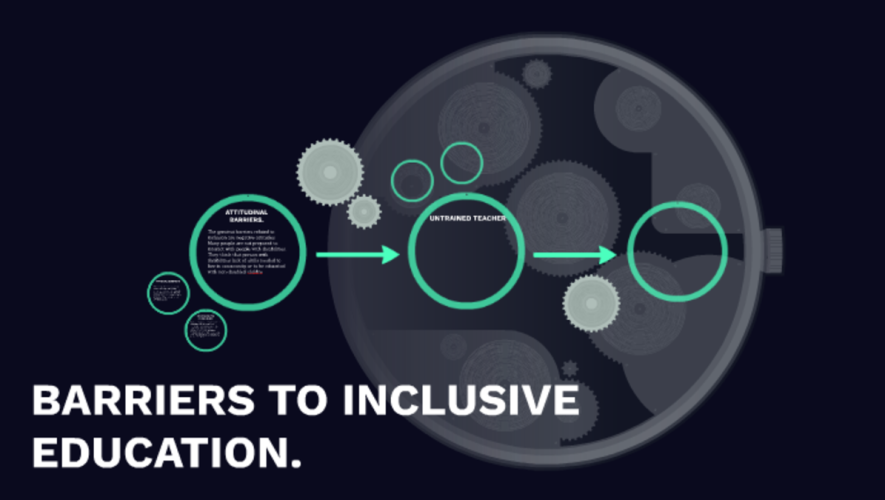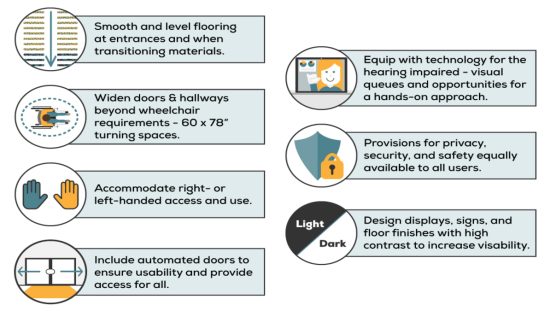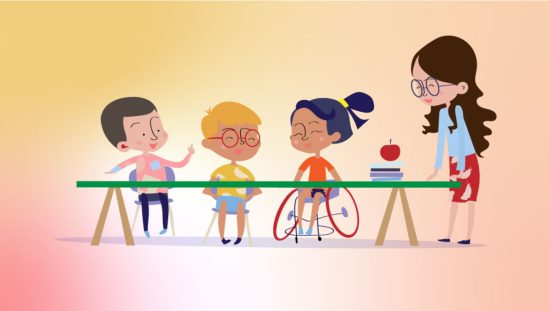Although the Government has attempted to create policies that are inclusive for people with disabilities, their implementation efforts have not resulted in an inclusive system of education, nor have they reached their goal of “education for all” across the country. It is because of various barriers which are both external and internal as well. These barriers, being faced by children with disabilities are summarized below.
1. ‘Special Educational Needs’ As ‘Barriers’ to Inclusion
Clough and Corbett (2000) are of the view that the very concept of ‘special educational needs’ act as ‘barriers’ to inclusion. The identification of children with special educational needs requires labeling and special treatment which is in no means a productive contribution to make to the inclusive education agenda. This discrimination is against the very concept of inclusion. To avoid this, the Salamanca Framework of Action has also referred to a move from the term ‘special educational needs’ to inclusive education.
2. Attitudinal Barriers
Negative and non-cooperating attitudes of the stake-holders like members of society, pears and teachers etc. that hinder inclusion are:
a. Social exclusion and Discrimination
Disabled persons are socially ostracized by non-disabled people in the less developed societies due to established beliefs that educating the disabled is senseless and futile. Many are marginalized by other dimensions such as poverty, gender and caste. The social exclusion and negative attitudes result in social discrimination and thus leads to isolation, which produces barriers to inclusion.
b. Peer Pressure
The peers in school, being the closest on par, play an important role in the lives of the children with disabilities. Children with disabilities are often an easy target for being teased and bullied by their non-disabled peers. This vulnerability to bullying is found across all types of disabilities. Hence, a negative peer attitude proves to be a major barrier to full social inclusion at school for students with disabilities.
b. Attitude of Regular Teachers
There are two general attitudes of regular teachers which affect their acceptance and commitment to implementing inclusion. Firstly, regular teachers considered children with disabilities as the responsibility of the resource teachers. Secondly, they felt children with disabilities to be a ‘disturbance’ to the class and as causing distractions which delayed course completion. Therefore, they choose to ignore their presence and concentrate on execution of their lesson plans.
3. Schools as Barriers
The challenges faced by children with disabilities who have secured admission in inclusive schools are:
a. Admission
Children with disabilities aspiring to study in inclusive school have the greater challenge in their attempt to secure admission. It is observed that most inclusive schools enroll children with only mild disabilities. They also give preference when parents are willing to take on the extra responsibility for their child. Parents’ inability to pay high fees, particularly in case of private schools, also is another barrier to get admission.
b. Accessibility Problem
Sometimes non-availability of school or its location in area that cannot be accessed becomes the major barrier for disabled children to get inclusive education. Students undergo difficulty in reaching the schools by themselves or with the help of their parents. Lack of proper local transport facilities add to the problem.
c. Buildings and Infrastructure
Children with disabilities face barriers if the building has not been constructed with their mobility needs in mind. Most school buildings don’t respond to the requirement of these learners properly. Students with special needs cannot access all the places in the compound such as playgrounds, washrooms, library, doors, passageways, stairs and steep ramps, recreational areas, etc.
d. Materials and Technology
For the hearing impaired students teachers hardly use any visual aids. Similarly, for the visually impaired the schools often do not provide Braille slate, Braille, Braille sheets, Braille-Text books.
e. Classroom Size
Another challenge in the inclusive schools is high teacher-student ratios. Generally in a normal classroom there are fifty to sixty students. For a teacher it is not possible to deal with so many learners with diversity. It becomes difficult for students to adjust with so many students and sometimes children with special needs feel alien in the normal classroom.
4. Curriculum as a Barrier
In any education system, the curriculum is one of the major obstacles or tools to facilitate the development of more inclusive system. In our country curriculum is unable to meet the needs of a wide range of different learners. In it, there is little flexibility for local adaptations or for teachers to experiment and try out new approaches. As a result of the knowledge based curriculum, the examinations are also too much content oriented rather than success oriented. This is also a barrier to measure the achievement of children with special needs.
5. Untrained Teachers as Barrier
Teachers’ training, abilities and attitudes can be major limitations for inclusive education. The teachers are not trained adequately to teach the children with special needs. At present, training to teachers is fragmented, uncoordinated and inadequate taking place in a segregated manner i.e. one for special children and another for students with general capabilities. So, all teachers do not have proper skills and positive attitudes towards learners with special needs, it is unlikely that these children will receive satisfactory education.
6. Constraint of Resources
Lack of adequate financial resources is a big challenge to inclusion. For inclusion every institution would be required to make financial provisions for providing facilities like lifts, ramps, barrier free classrooms, toilets etc. Technology could be used in the form of motion sensors to open doors, flush toilets and automatic door buttons for easier access through doors. There would be a need to create learning resources for persons with disability. This could be in the form of digital library, braille literature and additional visual resources for students with hearing disability etc. Financial resources would also be required to train and retrain faculty for teaching persons with disabilities in inclusive environment. For this, the Government’s spending on education will have to be increased to provide inclusive set up.
Courtesy: PARIPEX – IJR



